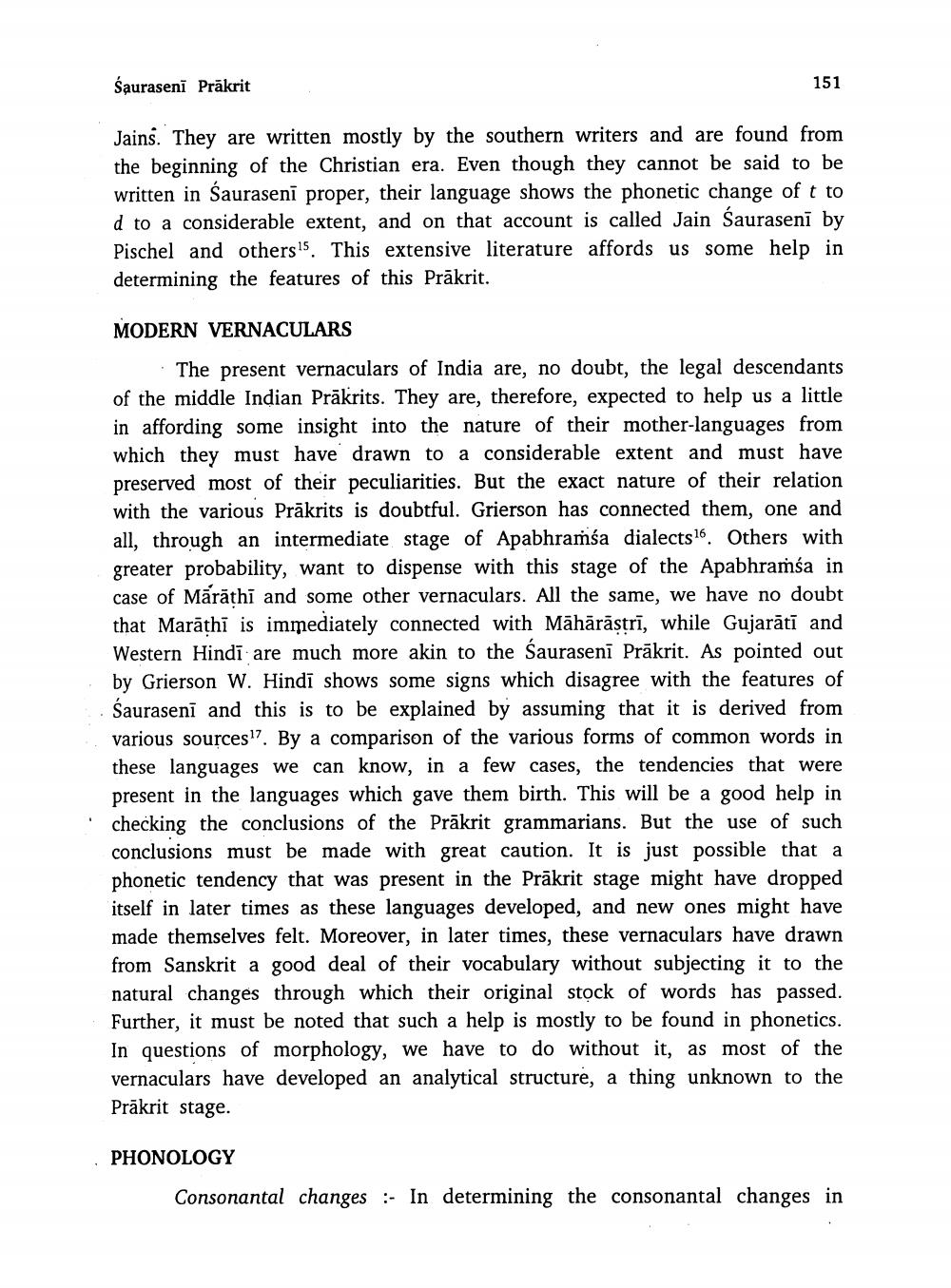________________
Śauraseni Prākrit
151
Jains. They are written mostly by the southern writers and are found from the beginning of the Christian era. Even though they cannot be said to be written in Sauraseni proper, their language shows the phonetic change of t to d to a considerable extent, and on that account is called Jain Saurasenī by Pischel and others. This extensive literature affords us some help in determining the features of this Prākrit.
MODERN VERNACULARS
The present vernaculars of India are, no doubt, the legal descendants of the middle Indian Prākrits. They are, therefore, expected to help us a little in affording some insight into the nature of their mother-languages from which they must have drawn to a considerable extent and must have preserved most of their peculiarities. But the exact nature of their relation with the various Prākrits is doubtful. Grierson has connected them, one and all, through an intermediate stage of Apabhraṁsa dialects16. Others with greater probability, want to dispense with this stage of the Apabhramśa in case of Márāthi and some other vernaculars. All the same, we have no doubt that Marāthī is immediately connected with Māhārāstrī, while Gujarātī and Western Hindī are much more akin to the Sauraseni Prākrit. As pointed out by Grierson W. Hindi shows some signs which disagree with the features of Saurasenī and this is to be explained by assuming that it is derived from various sources??. By a comparison of the various forms of common words in these languages we can know, in a few cases, the tendencies that were present in the languages which gave them birth. This will be a good help in checking the conclusions of the Prākrit grammarians. But the use of such conclusions must be made with great caution. It is just possible that a phonetic tendency that was present in the Prākrit stage might have dropped itself in later times as these languages developed, and new ones might have made themselves felt. Moreover, in later times, these vernaculars have drawn from Sanskrit a good deal of their vocabulary without subjecting it to the natural changes through which their original stock of words has passed. Further, it must be noted that such a help is mostly to be found in phonetics. In questions of morphology, we have to do without it, as most of the vernaculars have developed an analytical structure, a thing unknown to the Prākrit stage.
PHONOLOGY
Consonantal changes : In determining the consonantal changes in




